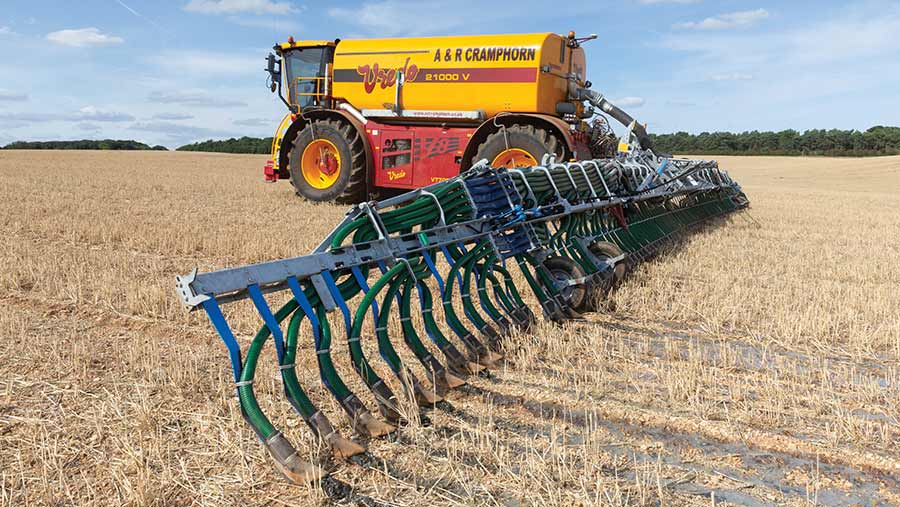Plasma-treated slurry reveals promising results in trials
 Spreading pig slurry © Tim Scrivener
Spreading pig slurry © Tim Scrivener Independent trial data assessing the impact of plasma-treated slurry as a replacement of artificial fertiliser has revealed promising results when tested on crops of winter wheat and grass.
The novel technology developed by Norwegian firm N2 Applied uses air and electricity to boost the nitrogen (N) content of liquid manures and aims to help farmers reduce nutrient losses and improve crop performance.
See also: New soil service tests for plant available nutrients
Across three years’ worth of trial data, the plasma-treated slurry was shown to increase both wheat and grass nitrogen yields by an average of 34%, when compared with untreated slurry.
The results were combined with the previous two years of trials which revealed a consistent increase in N-yield, ranging year-on-year from 27% to 41%.
In addition, the nitrogen-enriched organic fertiliser averaged a 59% increase in nitrogen use efficiency for wheat and grass compared with untreated slurry over a three-year trial period.
Annual field trials were carried out by independent research partners in diverse locations with a wide range of soil and climatic conditions.
During the 2022 season, yield trials were conducted by Adas, Oxford Agricultural Trials and Scotland’s Rural College. Digestate, cow and pig slurry were all put to the test.
Emission cuts
As the treated slurry is more stable, a higher proportion of N is available to plants rather than leaching into soils and waterways.
The enriched slurry matches performance levels of a typical ammonium fertiliser.
When compared with an ammonium nitrate-based fertiliser, the nitrogen use efficiency of the treated product was 96% of that achieved by the artificial fertiliser.
Furthermore, ammonia and methane emissions are cut severely in the slurry zapping process, which also recycles on-farm nutrients and applies organic N and carbon to the soil, helping it to thrive.
The acidification of slurries reduces ammonia emissions and the plasma treatment process reduces the pH of slurries from 7.5-8 to 5-5.5pH.
Any unstable N is no longer lost as ammonia gas and instead is retained in the form of nitrate in the acidic environment.
Three years of Adas emission trials has consistently demonstrated a significant reduction in ammonia emissions, with a 5% loss from treated slurry compared with 30% loss from the untreated, on average.
However, there was no significant difference when comparing ammonia emissions between the treated slurry and ammonium nitrate fertiliser.
Furthermore, methane is almost entirely eliminated, leading to significant reduction in the amount of emissions associated with livestock farming.
Carl Hansson, chief executive officer of N2 Applied, says the company is on a mission to produce a sustainable on-farm fertiliser, which is why the firm has continued to assess the efficacy of the treated slurry through trial work.
“These latest results demonstrate that plasma treatment stands toe-to-toe with chemical fertilisers on yield, and is more attractive, given the environmental benefits.
Technology
The patented plasma technology is now available from equipment manufactured by GEA Farm Technologies.
The plasma conversion “locks in” both carbon and nitrogen to the liquid waste material, while vastly enriching its nitrogen content.

